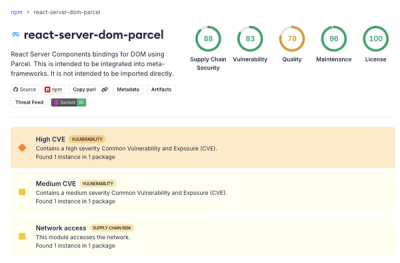babel-plugin-transform-vue-jsx 
Babel plugin for Vue 2.0 JSX
Requirements
-
Assumes you are using Babel with a module bundler e.g. Webpack, because the spread merge helper is imported as a module to avoid duplication.
-
This is mutually exclusive with babel-plugin-transform-react-jsx.
Usage
npm install\
babel-plugin-syntax-jsx\
babel-plugin-transform-vue-jsx\
babel-helper-vue-jsx-merge-props\
babel-preset-env\
--save-dev
In your .babelrc:
{
"presets": ["env"],
"plugins": ["transform-vue-jsx"]
}
The plugin transpiles the following JSX:
<div id="foo">{this.text}</div>
To the following JavaScript:
h('div', {
attrs: {
id: 'foo'
}
}, [this.text])
Note the h function, which is a shorthand for a Vue instance's $createElement method, must be in the scope where the JSX is. Since this method is passed to component render functions as the first argument, in most cases you'd do this:
Vue.component('jsx-example', {
render (h) {
return <div id="foo">bar</div>
}
})
h auto-injection
Starting with version 3.4.0 we automatically inject const h = this.$createElement in any method and getter (not functions or arrow functions) declared in ES2015 syntax that has JSX so you can drop the (h) parameter.
Vue.component('jsx-example', {
render () {
return <div id="foo">bar</div>
},
myMethod: function () {
return <div id="foo">bar</div>
},
someOtherMethod: () => {
return <div id="foo">bar</div>
}
})
@Component
class App extends Vue {
get computed () {
return <div id="foo">bar</div>
}
}
Difference from React JSX
First, Vue 2.0's vnode format is different from React's. The second argument to the createElement call is a "data object" that accepts nested objects. Each nested object will be then processed by corresponding modules:
render (h) {
return h('div', {
props: {
msg: 'hi'
},
attrs: {
id: 'foo'
},
domProps: {
innerHTML: 'bar'
},
on: {
click: this.clickHandler
},
nativeOn: {
click: this.nativeClickHandler
},
class: {
foo: true,
bar: false
},
style: {
color: 'red',
fontSize: '14px'
},
key: 'key',
ref: 'ref',
refInFor: true,
slot: 'slot'
})
}
The equivalent of the above in Vue 2.0 JSX is:
render (h) {
return (
<div
// normal attributes or component props.
id="foo"
// DOM properties are prefixed with `domProps`
domPropsInnerHTML="bar"
// event listeners are prefixed with `on` or `nativeOn`
onClick={this.clickHandler}
nativeOnClick={this.nativeClickHandler}
// other special top-level properties
class={{ foo: true, bar: false }}
style={{ color: 'red', fontSize: '14px' }}
key="key"
ref="ref"
// assign the `ref` is used on elements/components with v-for
refInFor
slot="slot">
</div>
)
}
Component Tip
If a custom element starts with lowercase, it will be treated as a string id and used to lookup a registered component. If it starts with uppercase, it will be treated as an identifier, which allows you to do:
import Todo from './Todo.js'
export default {
render (h) {
return <Todo/>
}
}
JSX Spread
JSX spread is supported, and this plugin will intelligently merge nested data properties. For example:
const data = {
class: ['b', 'c']
}
const vnode = <div class="a" {...data}/>
The merged data will be:
{ class: ['a', 'b', 'c'] }
Vue directives
Note that almost all built-in Vue directives are not supported when using JSX, the sole exception being v-show, which can be used with the v-show={value} syntax. In most cases there are obvious programmatic equivalents, for example v-if is just a ternary expression, and v-for is just an array.map() expression, etc.
For custom directives, you can use the v-name={value} syntax. However, note that directive arguments and modifiers are not supported using this syntax. There are two workarounds:
-
Pass everything as an object via value, e.g. v-name={{ value, modifier: true }}
-
Use the raw vnode directive data format:
const directives = [
{ name: 'my-dir', value: 123, modifiers: { abc: true } }
]
return <div {...{ directives }}/>




